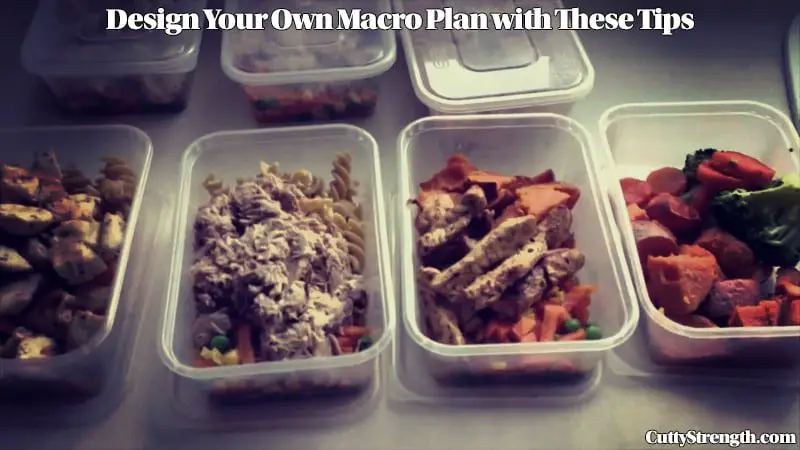Mathews McGarry is passionate about many forms of strength training, and spent years lifting, dragging and flipping all manner of heavy objects. After graduating on the Faculty of Exercise and Sport Science, he started writing about his experiences, and sharing advice for better life. Follow him on Twitter.
Meal planning is very important for keeping your good health, as well as for saving money and time for meal preparation.
Here are some of the major benefits of meal planning:
- It decreases food waste and saves money
- It maximizes your efficiency while in the kitchen and saves you a lot of time
- It enables you to purchase all of your groceries in advance saves you time grocery shopping
- It enables you to apply healthy diet plans, which makes you stronger and healthier
In this article we are going to focus on the last premise and explain how you can make a healthy meal plan that will satisfy your nutrition needs.
What’s a macro plan?
A macro plan is based on the amounts of macronutrients we take with each meal. Our macronutrient needs depend on our job, lifestyle, daily activities, etc.
These are some of the macronutrients we need to pay attention to:
- Carbohydrates – These are the substances that give us energy. Their intake should depend on our daily activity levels. People who lead a mostly sedentary lifestyles should consume 45% to 55% of carbohydrates in their daily diet, while in the daily meal plans of more active individuals (athletes for example), carbs should take up up to 60%.
- Proteins – Our body uses proteins for building muscles and other tissues. Their daily intake should vary from 10% to 35% of the total nutrient count, depending on your lifestyle and diet goals. High protein intake is usually associated with professional athletes or individuals who want to build muscle.
- Fat – Fat is another important energy source, alongside carbs, and it also helps our organism absorb certain vitamins. Healthy individuals should take 10% to 35% of fat calories per day, while concentrating on good fats that come from products like cold-pressed oils (olive, sunflower, sesame, coconut etc.), nuts and seeds, fatty fish, avocado, etc.
- Vitamins and Minerals – These substances are very important for maintaining normal body functions. In this table you can see their recommended daily values.
- Fibers – Both children and adults need from 20 to 30 grams of fiber per day. Fiber intake can be increased by eating whole fruits and vegetables, substituting meat with beans and legumes at certain meals, and introducing whole grain products into your future meal plan.
Important factors for choosing the right plan
The first thing you need to do when making your macro plan is to opt for certain combination of carbs, fats and protein.
As mentioned earlier, you should choose it depending on your goals and lifestyle, but you should also take into consideration your current body physique.
These are some of the plans you can choose depending on your goals:
- For muscle gain: 40%-60% of carbs, 25%-35% of protein and 15%-25% of fat;
- For fat loss: 10%-30% carbs, 30%-40% fat and 40%-50% of protein;
- For regular maintenance: 30%-50% carbs, 25%-35% of protein and 25%-35% of fat;
From the aspect of medicine and nutrition, the human physique can be separated into several different body types:
- Ectomorph (slender) – These types should maximize their carb intake (30%-60% depending on the diet goal) and get at least 25% of their calories from protein.
- Mesomorph (muscular) – Strong and athletic types should have 20% to 50% of carbs in their diet and shouldn’t take more than 40% of their calories from fat, especially if their goal is to lose weight.
- Endomorph (rounded) – Endomorphs should have a low carb intake (10% to 40%) even when trying to build muscle. When it comes to protein and fat, they should get at least 25% of their protein from 15% to 40% of fat calories. Since endomorphs need fewer calories and a lot of protein, supplements can be a great choice for this body type.
A very important factor in meal planning is gender. In most cases, women should have lower calorie and carb intake and greater fat intake than men.
A common misconception when it comes to meal planning is avoiding late night meals.
Of course this doesn’t mean you should get up in the middle of the night and loot your fridge, but if you had a late night workout, it is important that you eat afterwards.
Many experts argue about the best post-workout foods. After hard workouts, you should concentrate on protein to aid protein synthesis and on carbohydrates, which replenish muscle glycogen.
Calculating your macronutrients sounds complicated, but after setting your goal and determining the optimal nutrient intake comes the fun part where you can combine plenty of great foods and ingredients in order to make healthy meals, in accordance with your macronutrient plan.
